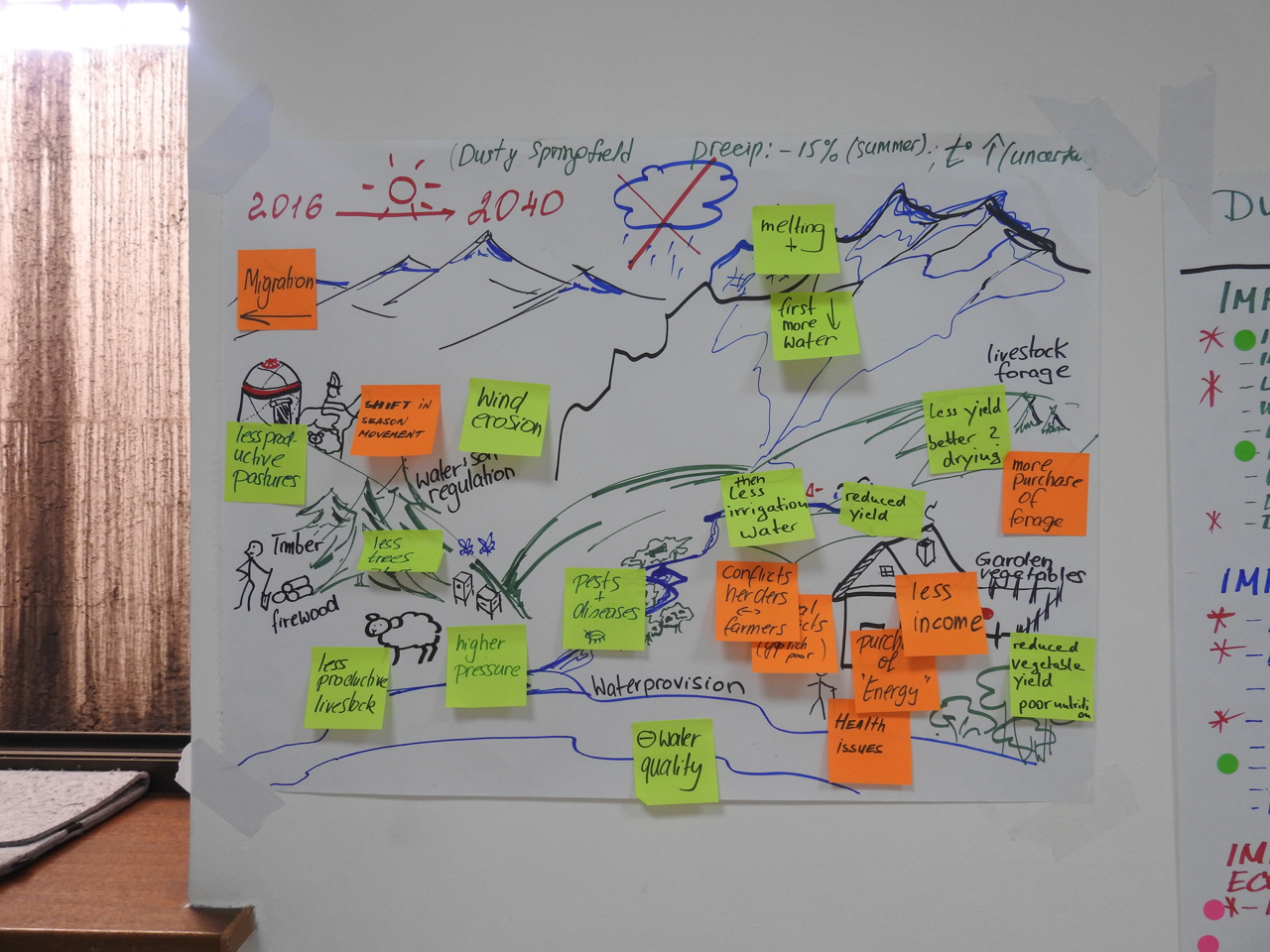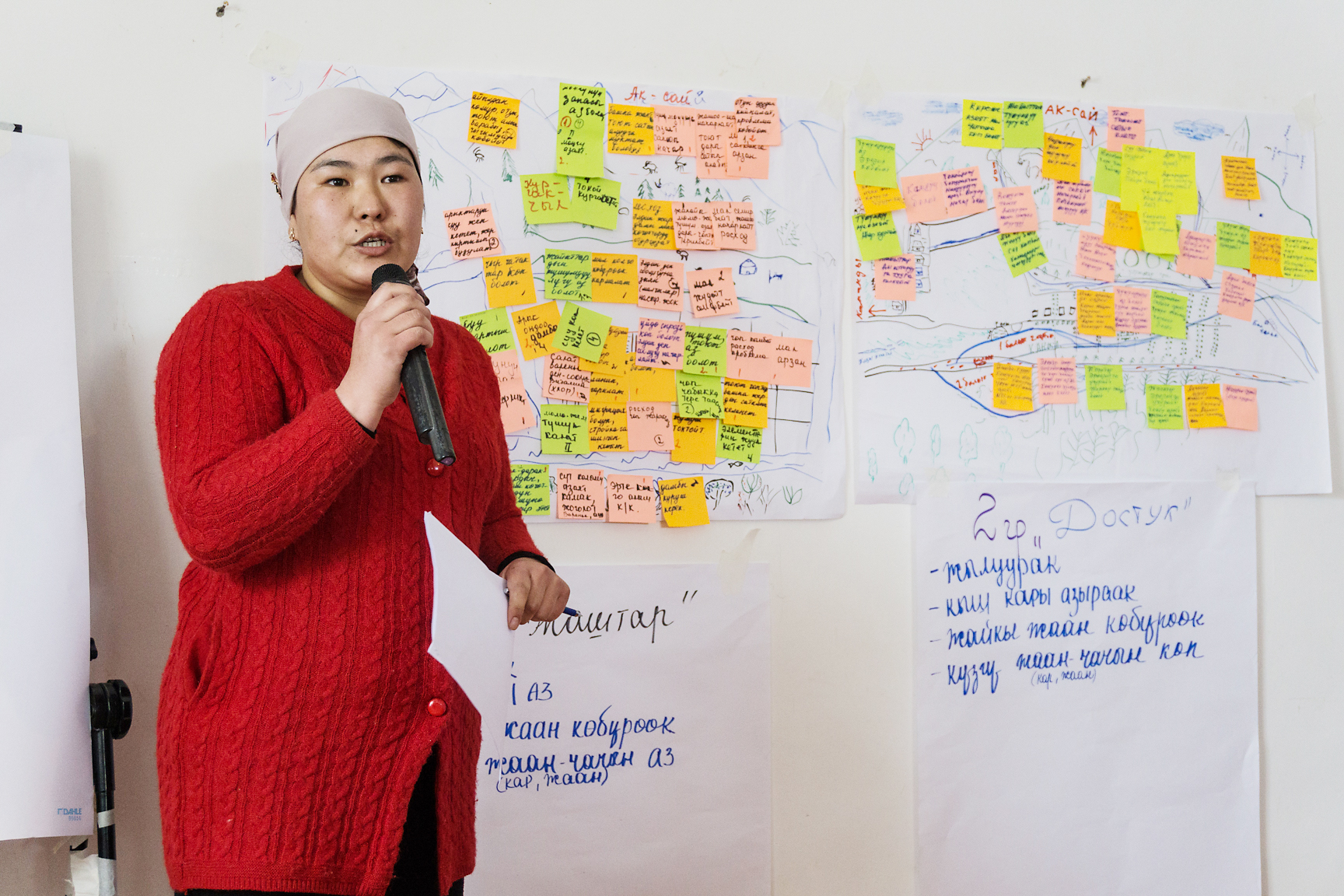


Seasonal (based on seasons defined by the communities according to predominant livelihood strategies with the help of an ecological calendar) and annual temperature and precipitation projections for the near future were developed for specific sites, namely Bash Kaiyndy/ Naryn District in Kyrgyzstan and two villages in the Bartang Valley of the Tajikistan Pamir region. Two time slices were developed to represent 30-year averages - 2020s (2011-2040) and 2050s (2041-2070) - and change factors were calculated relative to 1980-2005 modeled base periods. Presenting the projections as a range most accurately represents possible future climate conditions for decision-makers and planners applying a risk-based approach to climate change adaptation and resiliency. To consider inherent uncertainties in climate models, scenarios for future vulnerabilities are discussed and selected together with the community. Derived from the scenarios, climate change related threats complete the picture of the situation analysis, and future vulnerabilities can be prioritized through rating of conventional and climate change related threats.
- Kyrgyz villages have weather station data to support baseline information. Future absolute values could be estimated.
- Ecological calendar exercise conducted with local communities to define distribution of seasons according to predominant livelihood strategies
- Strong exchange between climate scientist and local implementing partners and community
- Strong facilitation skills when communicating future scenarios to the community
- Building the bridge between science and local development by integrating local perception into the projection modelling and through participatory scenario planning with the community has been very successful.
- When introducing the idea of climate change during workshops, there might be a danger to present climate change as the cause of all environmental problems. Careful explanation and definition of climate change is essential.
- Adapting climate projections for the specific audience (e.g. government officials, local villagers) is crucial.
- Pre-workshops / discussions with various informants familiar with the project area and local villagers yielded useful information and a more complete picture of the ecological and economic context of the assessment.
- Workshops are generally not a productive forum for technical debates about the validity of climate projections and statistics. It is helpful to focus on communicating climate impacts and hazards, rather than technicalities.